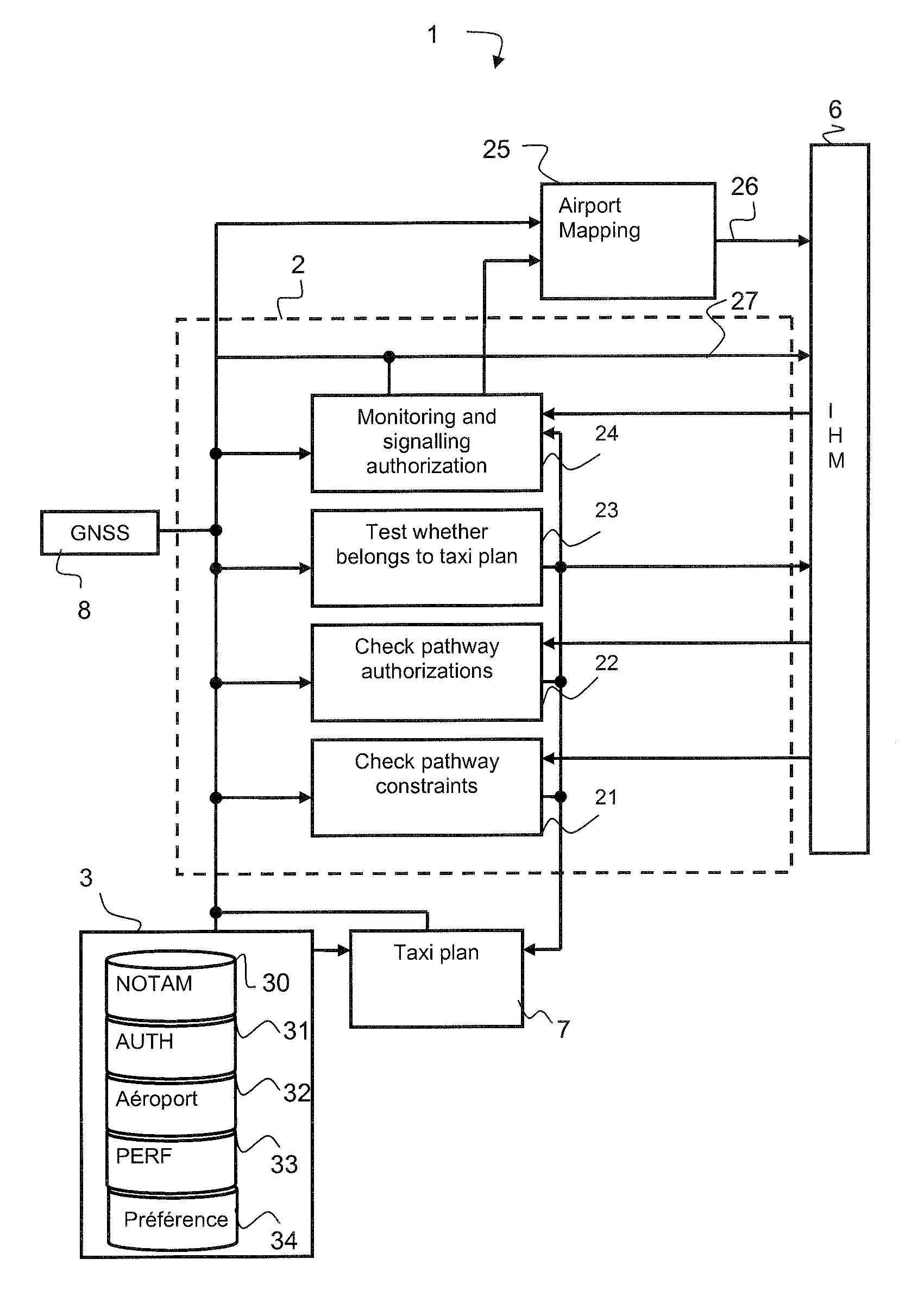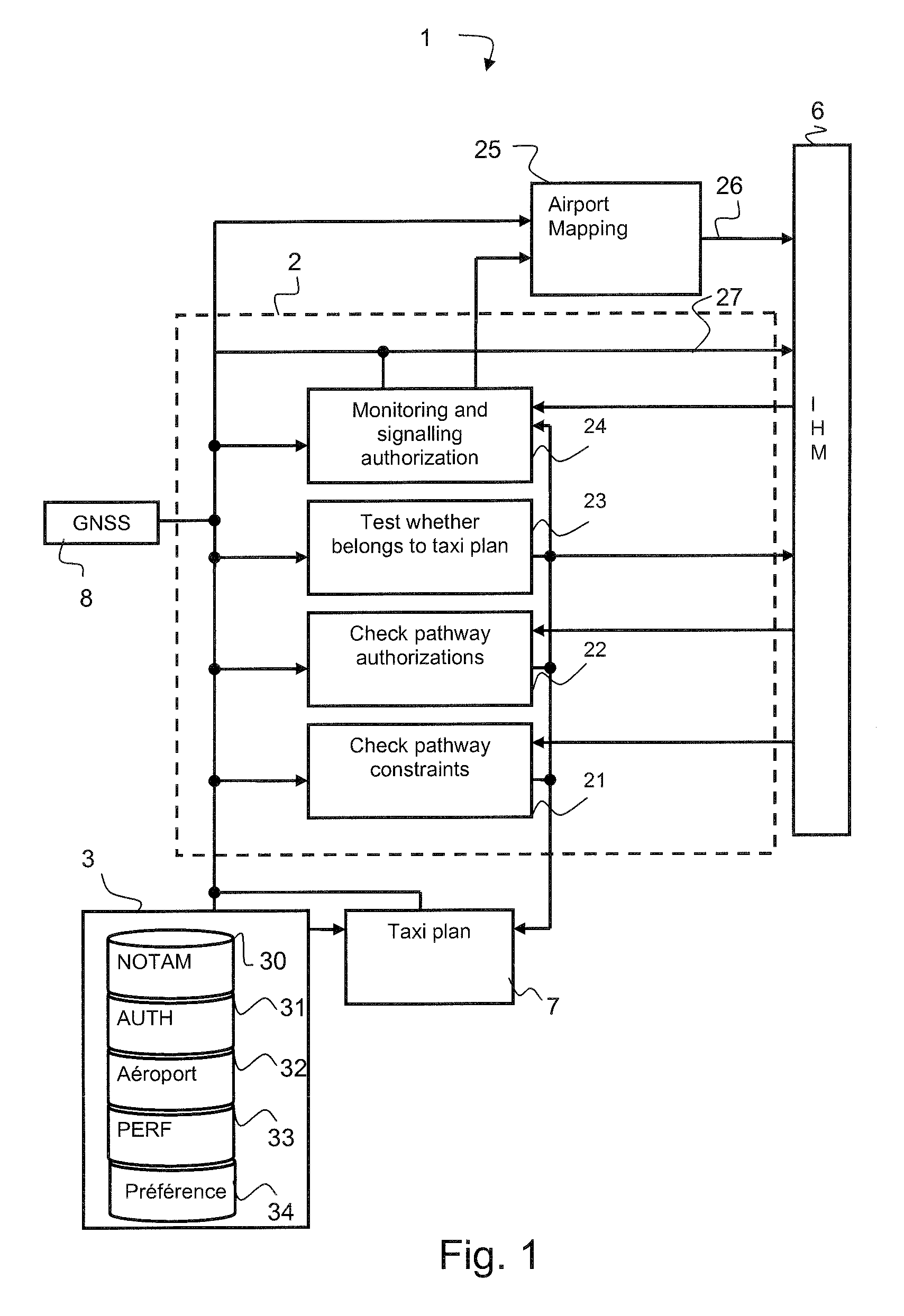Method and System for Monitoring an Aircraft Taxiing Phase
- Summary
- Abstract
- Description
- Claims
- Application Information
AI Technical Summary
Benefits of technology
Problems solved by technology
Method used
Image
Examples
Embodiment Construction
[0040]The first part of the description presents the hardware architecture, shown diagrammatically by FIG. 1, on which the monitoring method relies. The objective of this first part is to describe the data manipulated for the monitoring application and the systems producing these data. A second part of the description subsequently describes the functions of the monitoring system making it possible to aid the pilot in the management of the taxiing phase.
[0041]The pathway monitoring system 1 comprises a calculation device 2 comprising checking devices 21 to 24 implementing the monitoring functions of the monitoring method. For the formulation of these functions, the calculation device is connected to a database system 3, to a man-machine interface device 6 (MMI), to a taxi plan formulation device 7 and to a geo-location device 8.
[0042]The function of the MMI 6 is to present to the crew the taxi plan of the aircraft from the boarding zone to the takeoff runway during the takeoff phase ...
PUM
 Login to View More
Login to View More Abstract
Description
Claims
Application Information
 Login to View More
Login to View More - R&D
- Intellectual Property
- Life Sciences
- Materials
- Tech Scout
- Unparalleled Data Quality
- Higher Quality Content
- 60% Fewer Hallucinations
Browse by: Latest US Patents, China's latest patents, Technical Efficacy Thesaurus, Application Domain, Technology Topic, Popular Technical Reports.
© 2025 PatSnap. All rights reserved.Legal|Privacy policy|Modern Slavery Act Transparency Statement|Sitemap|About US| Contact US: help@patsnap.com



